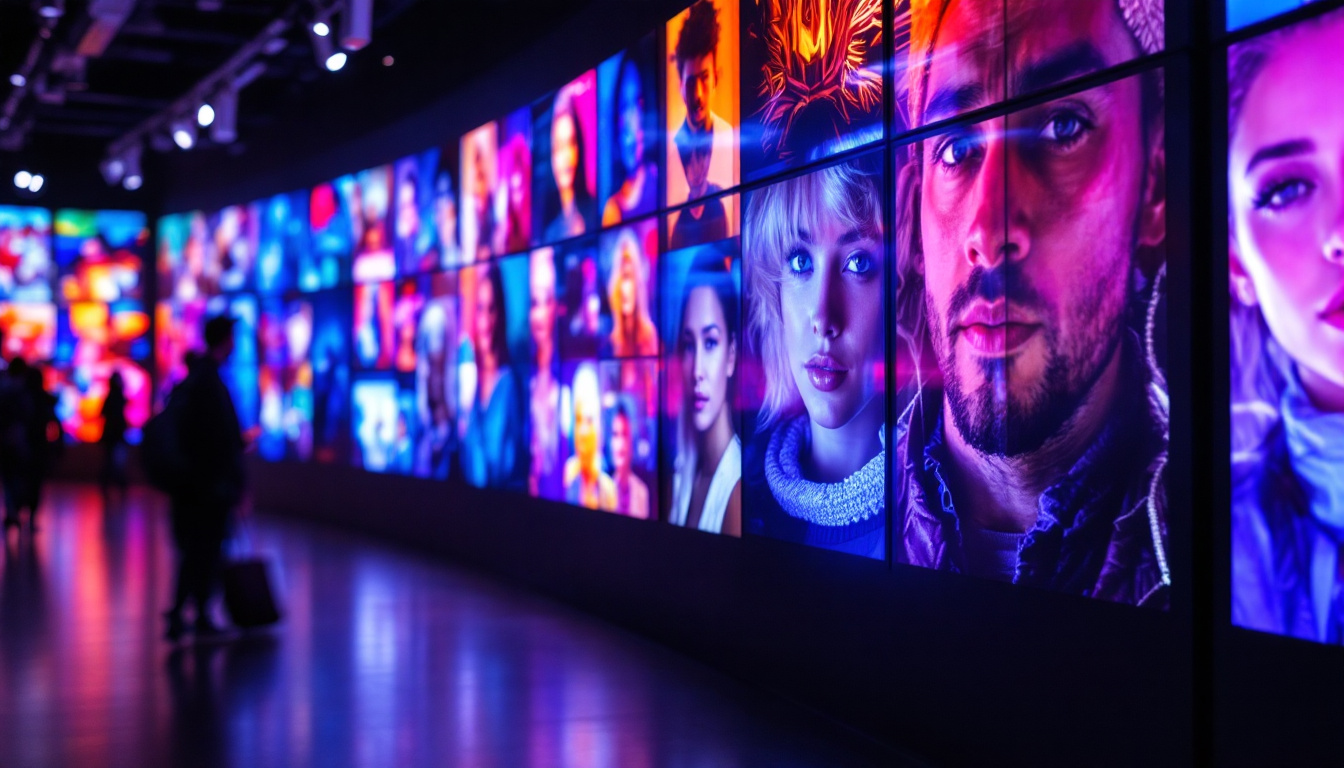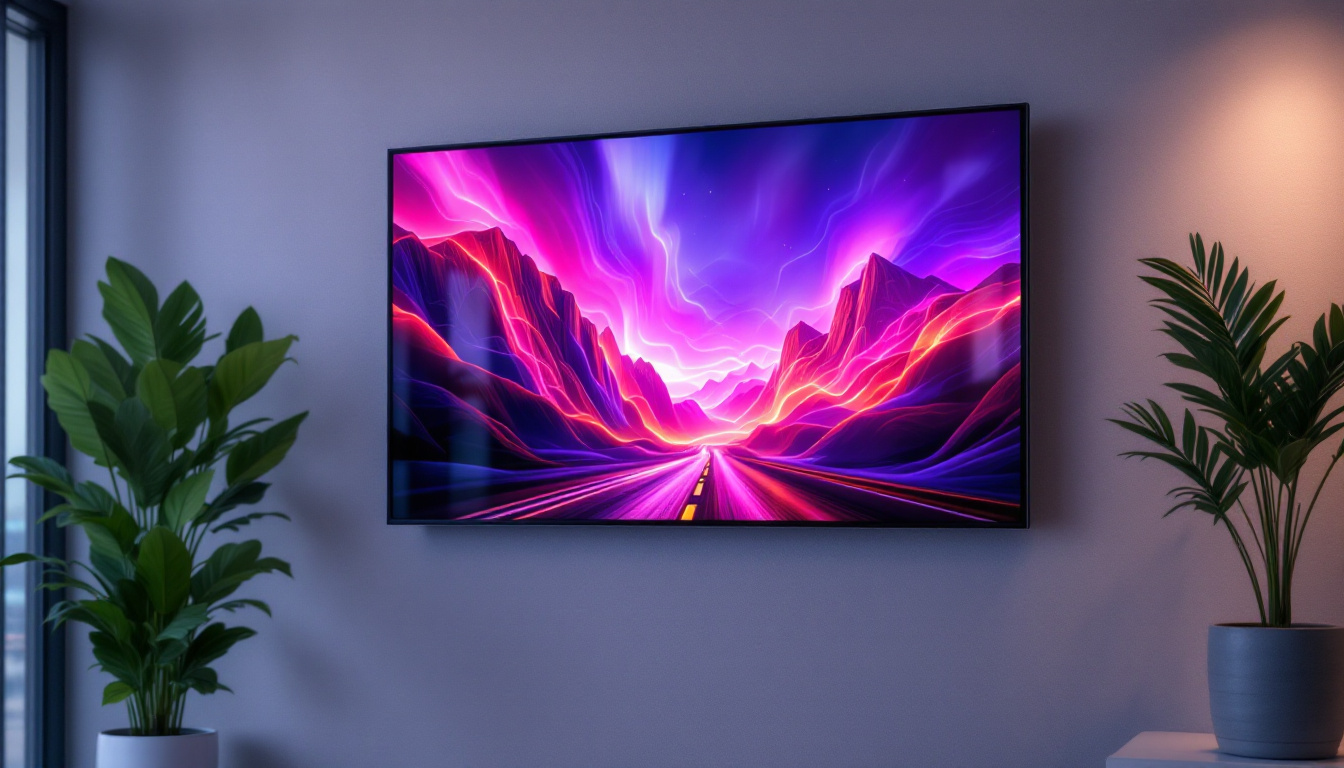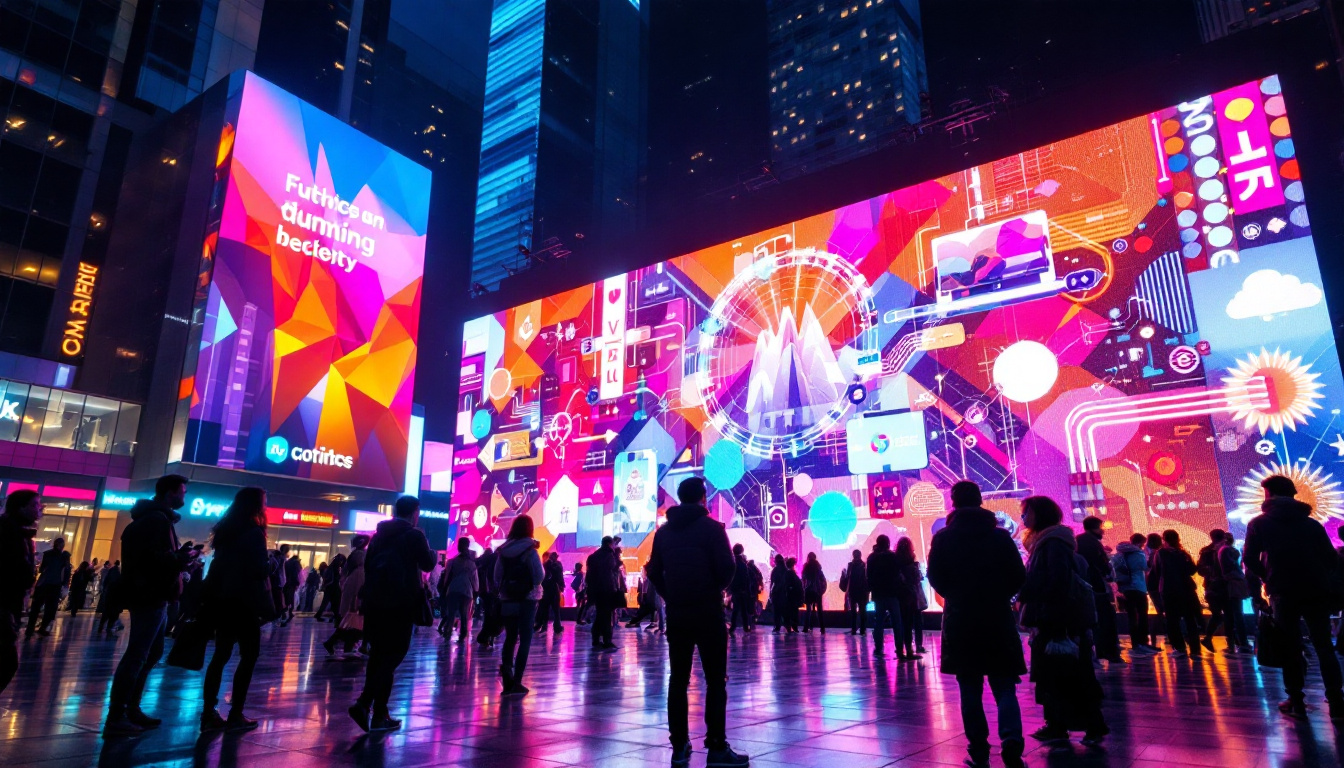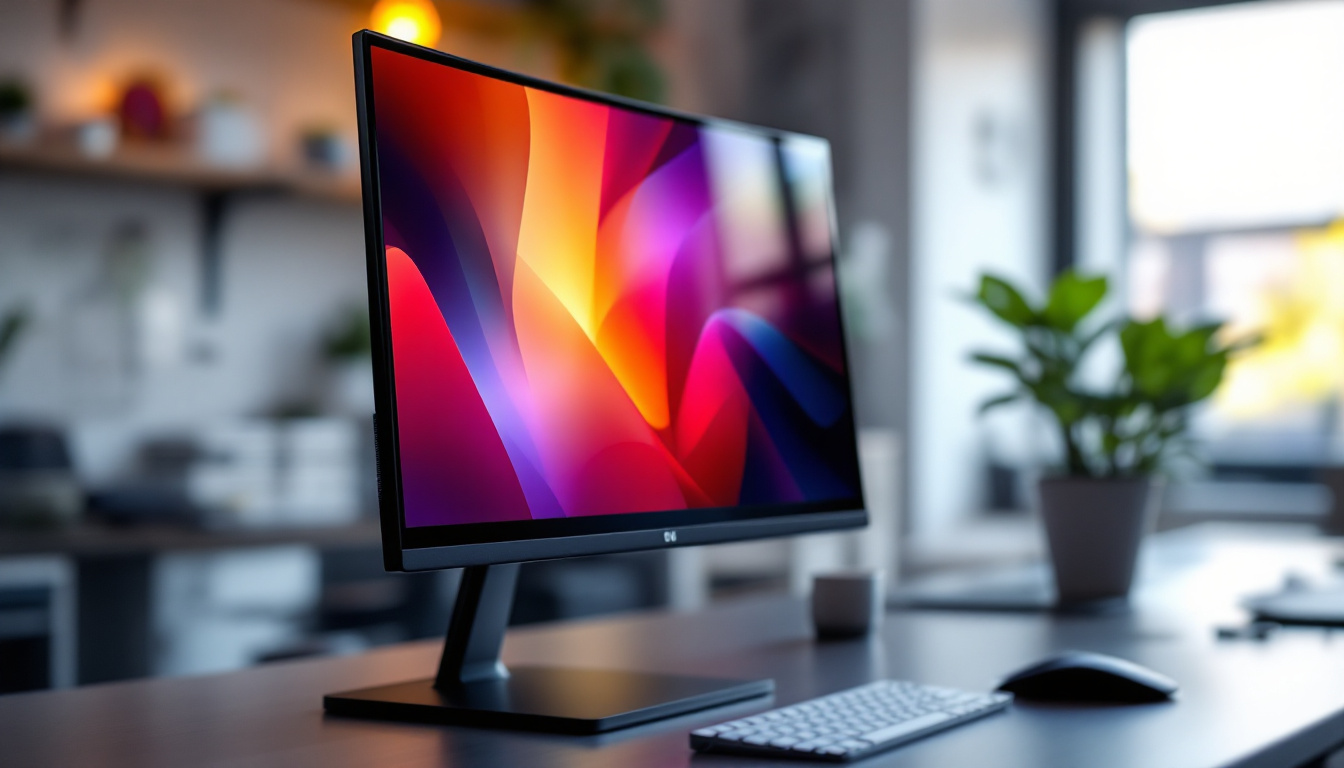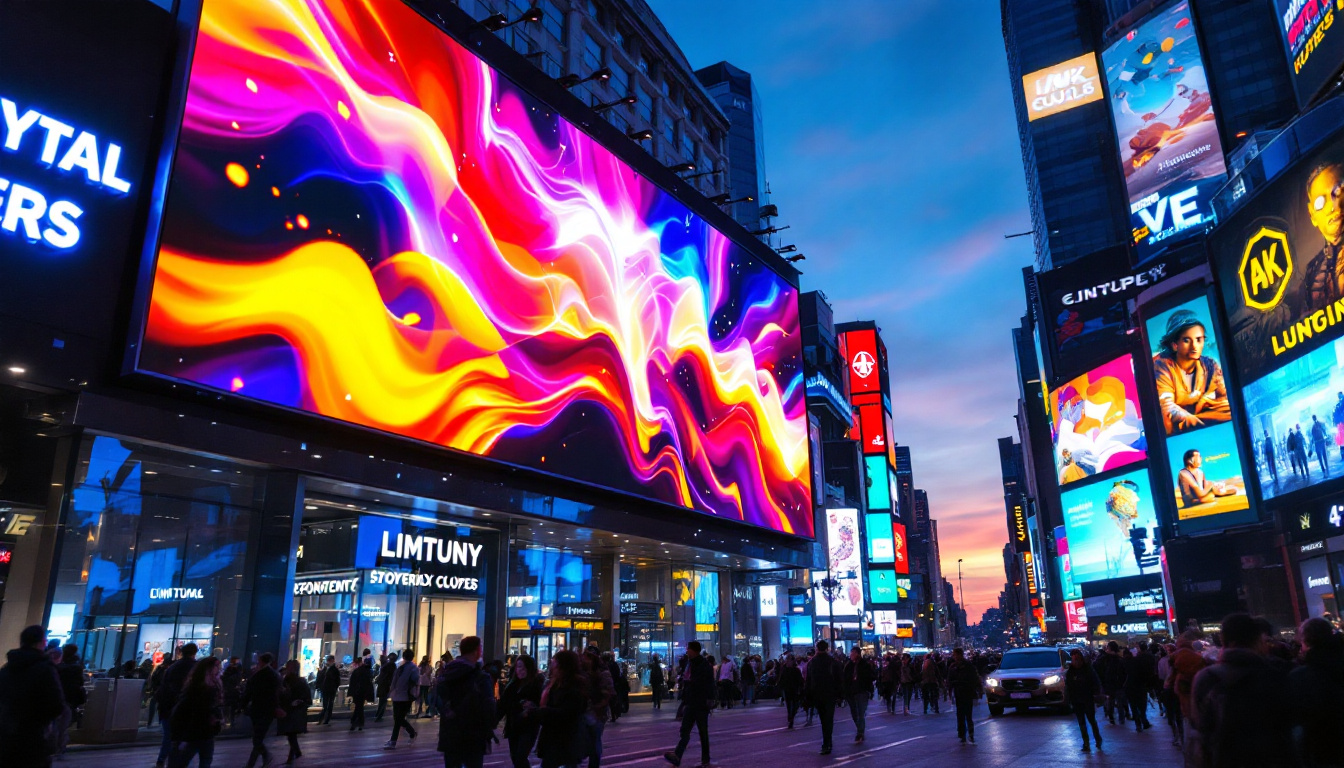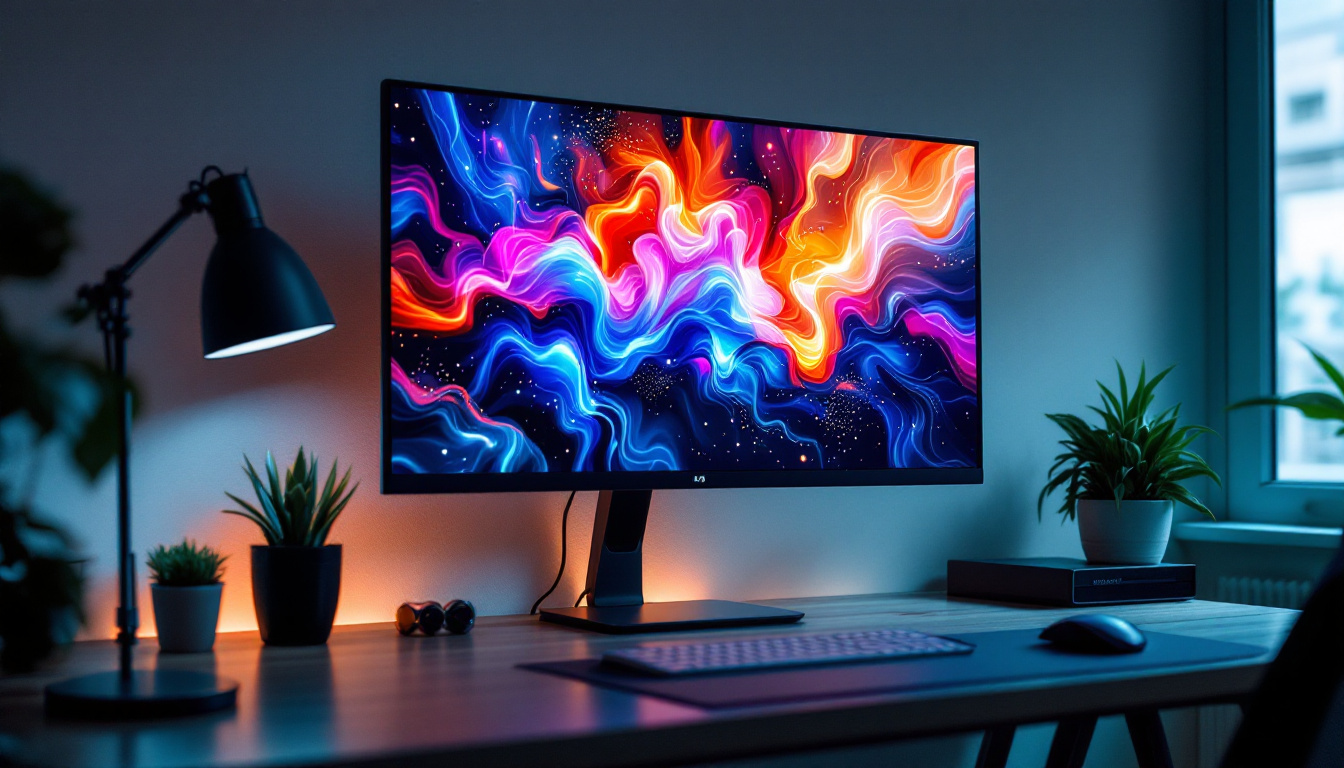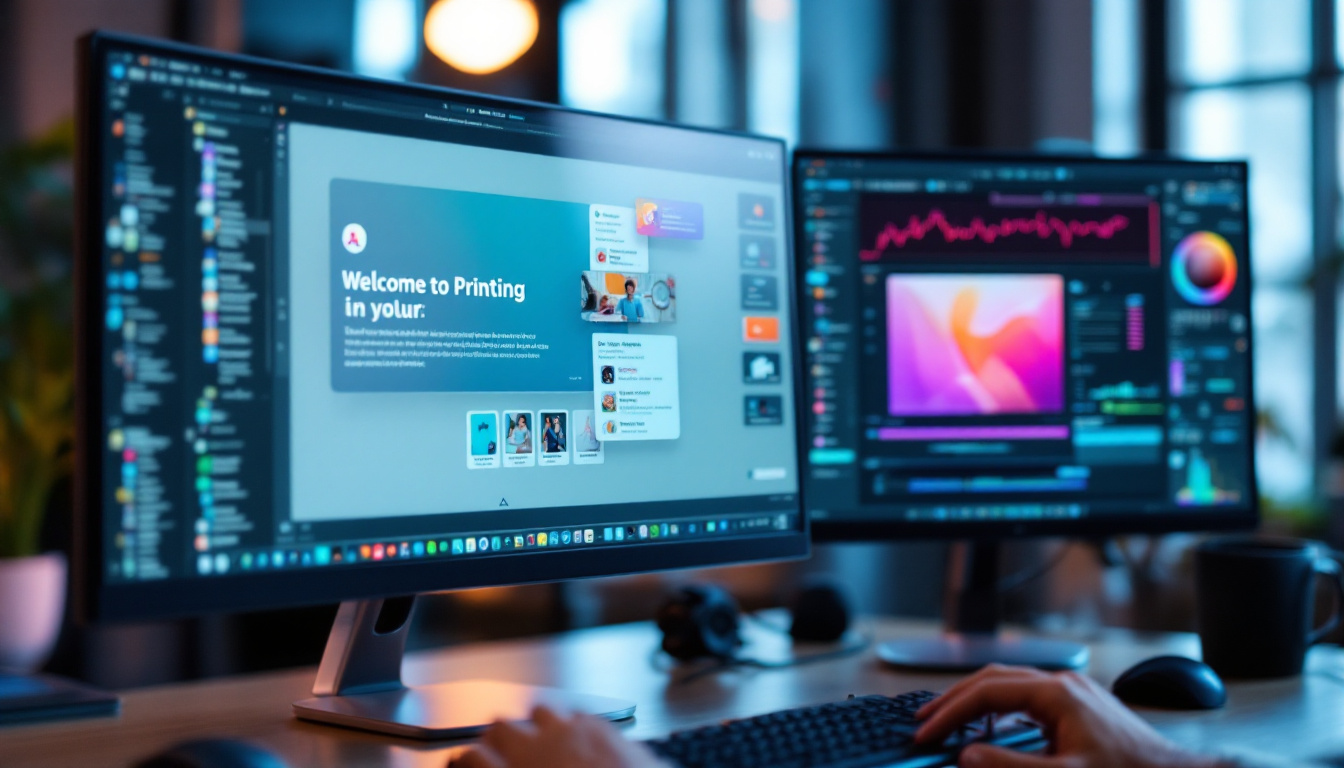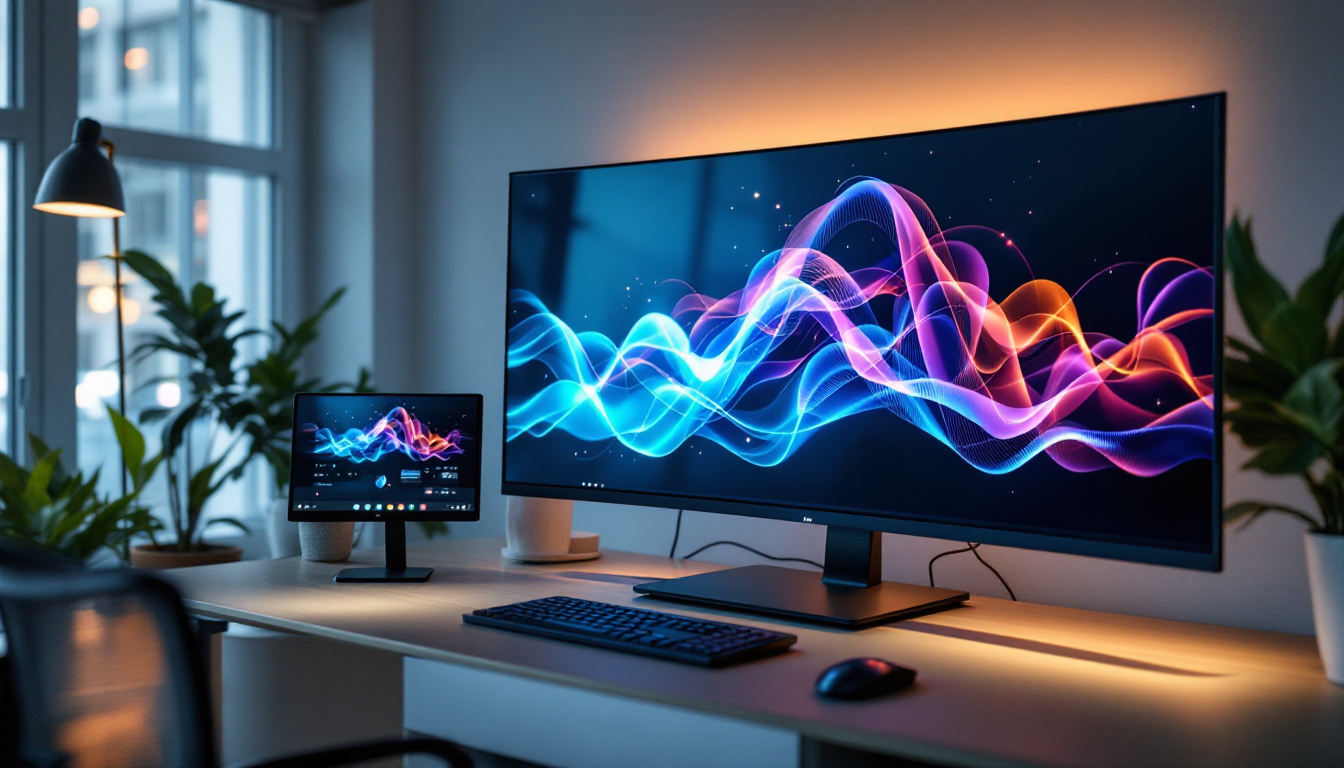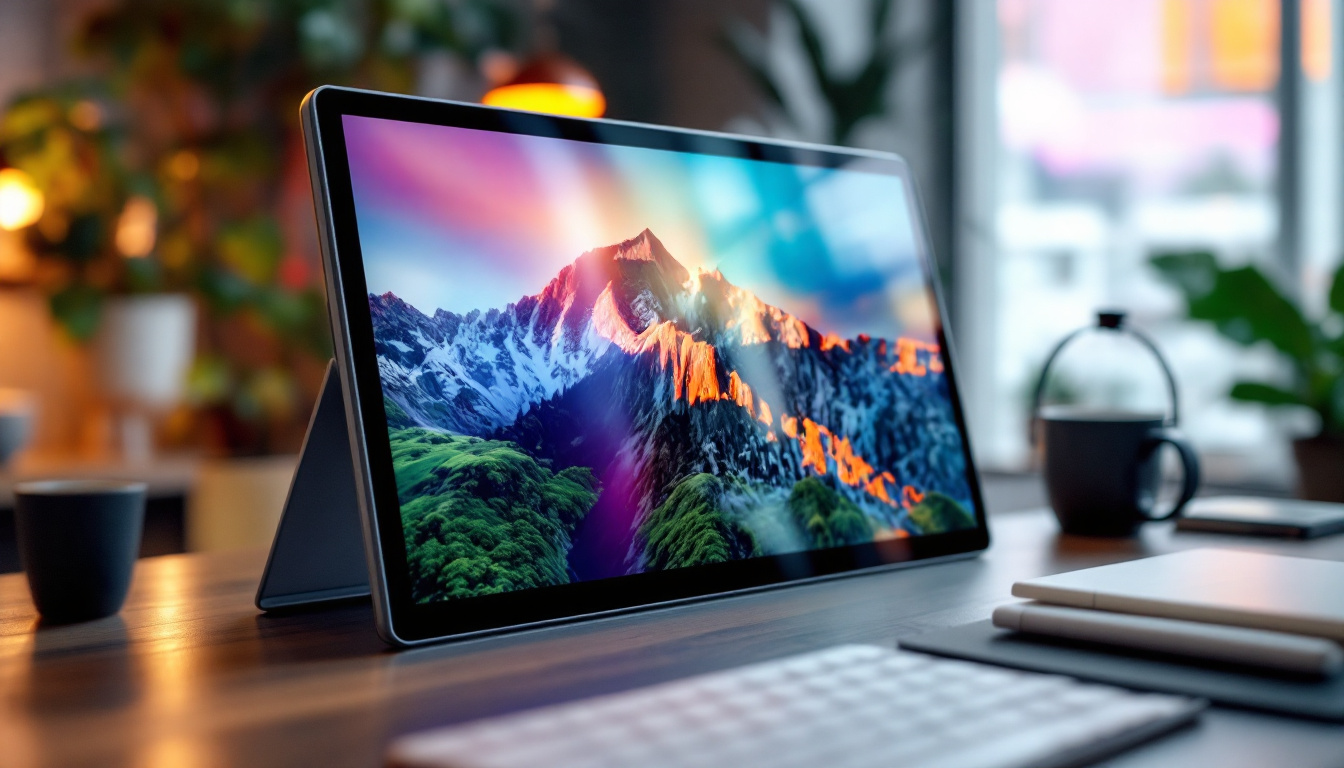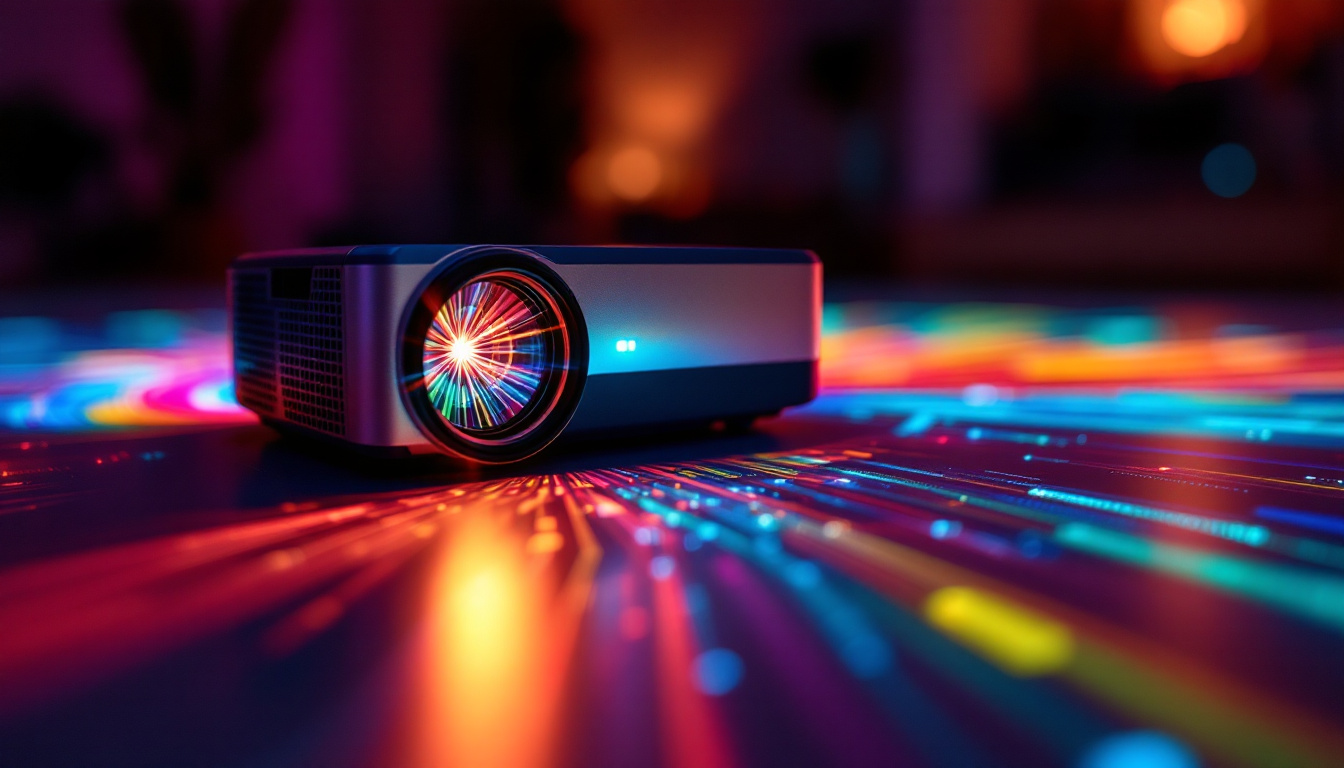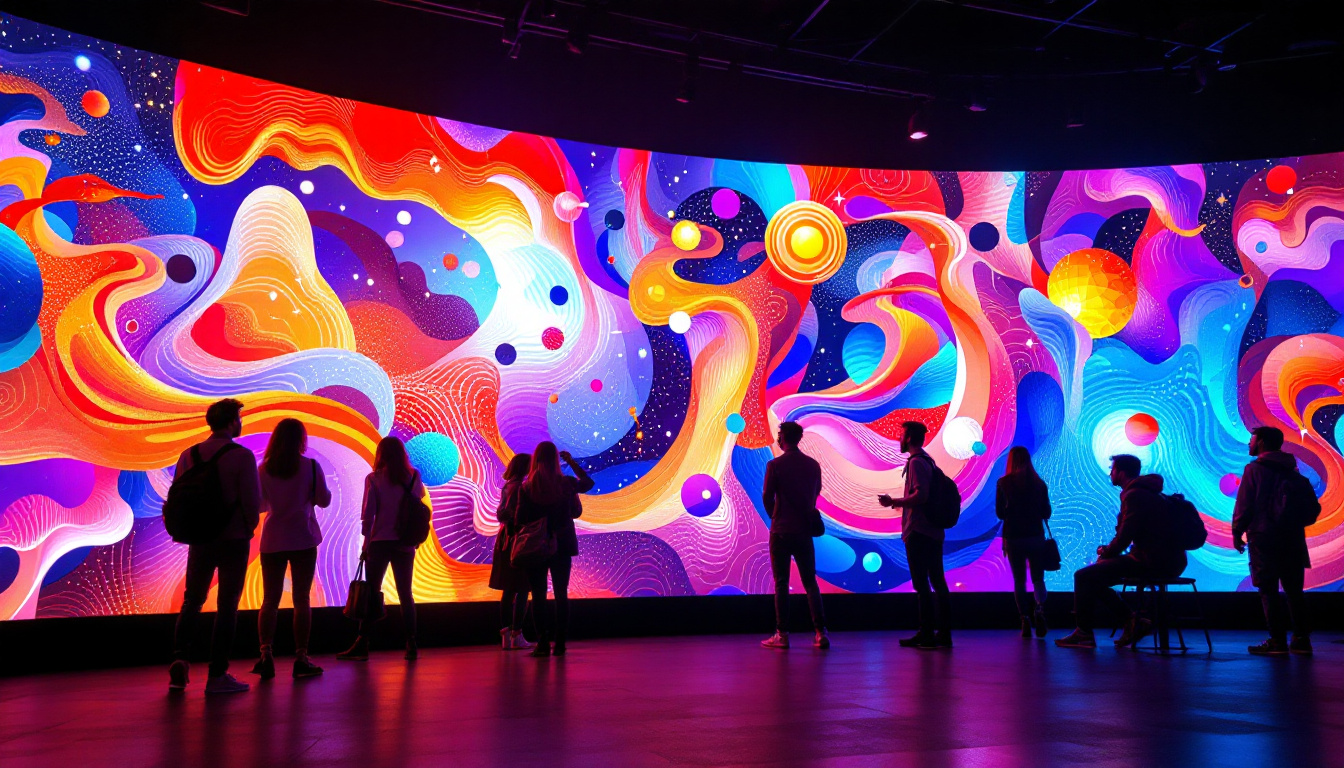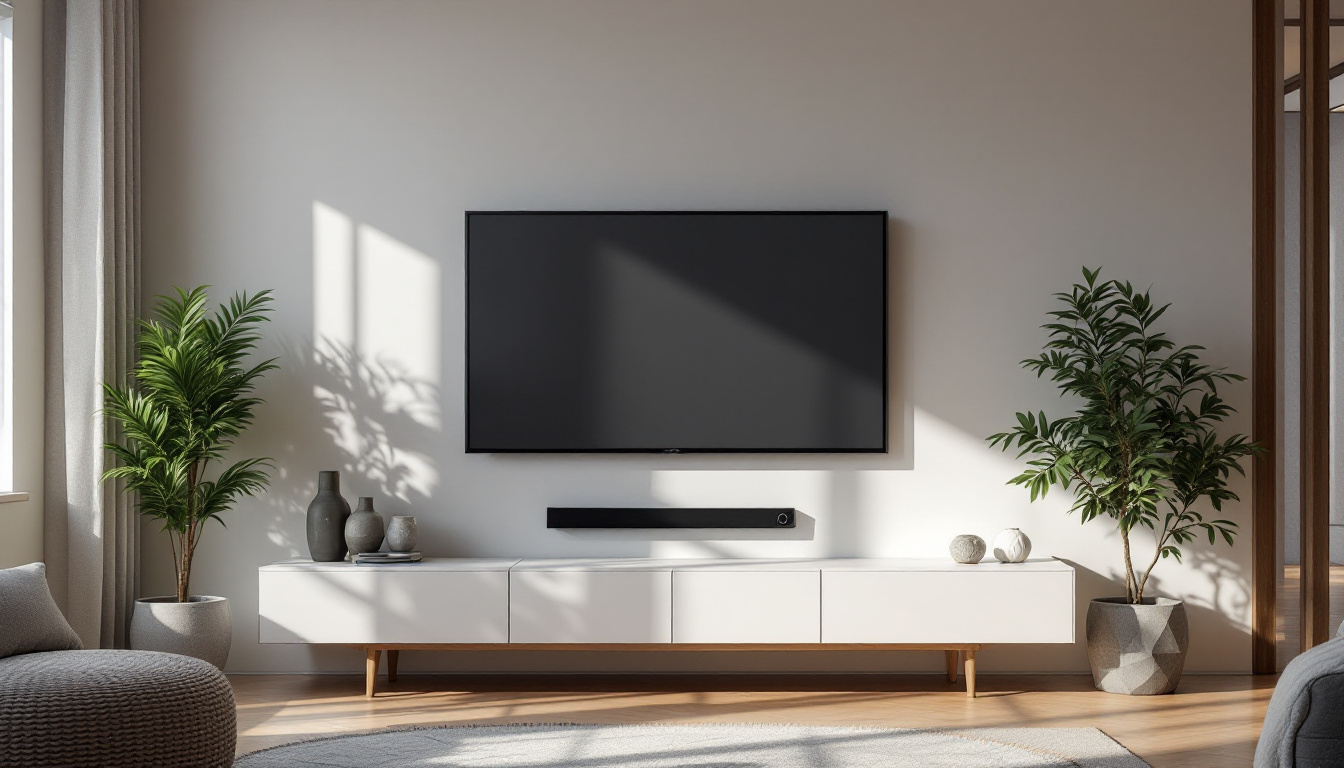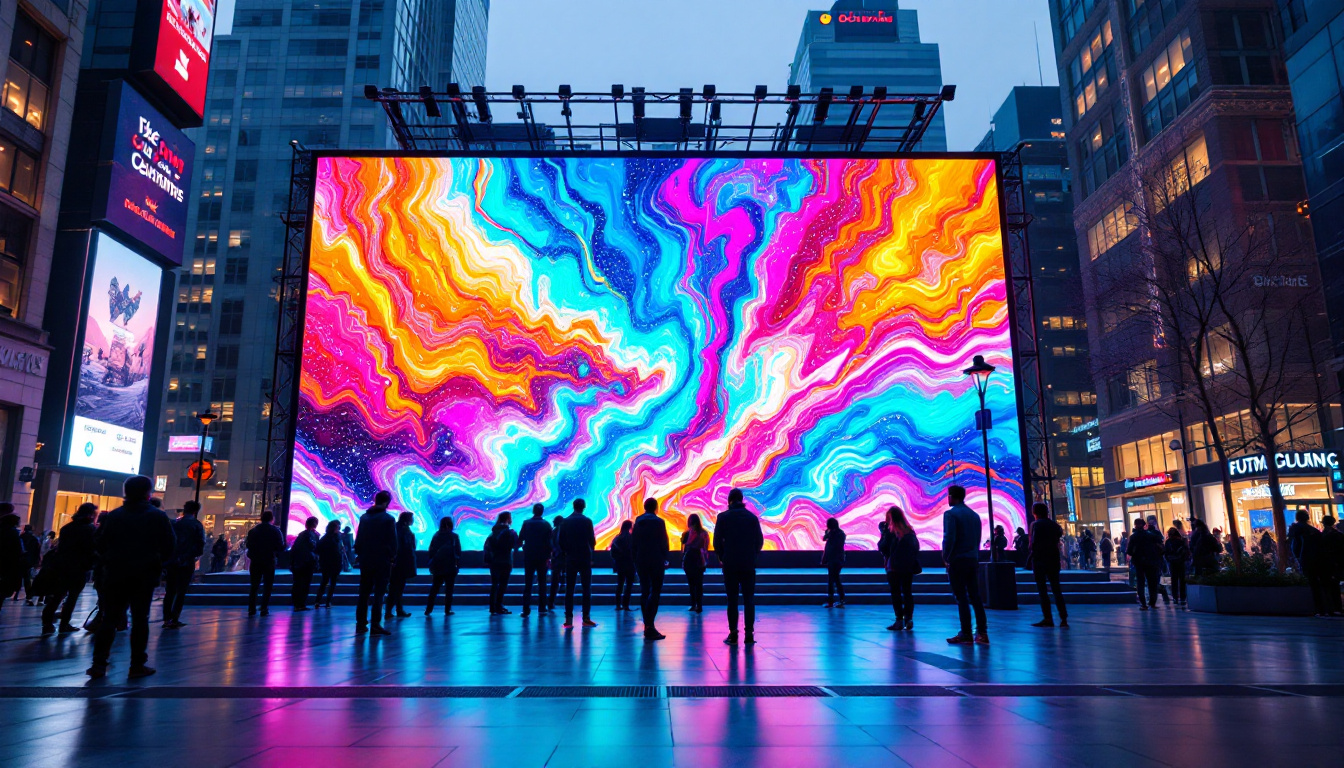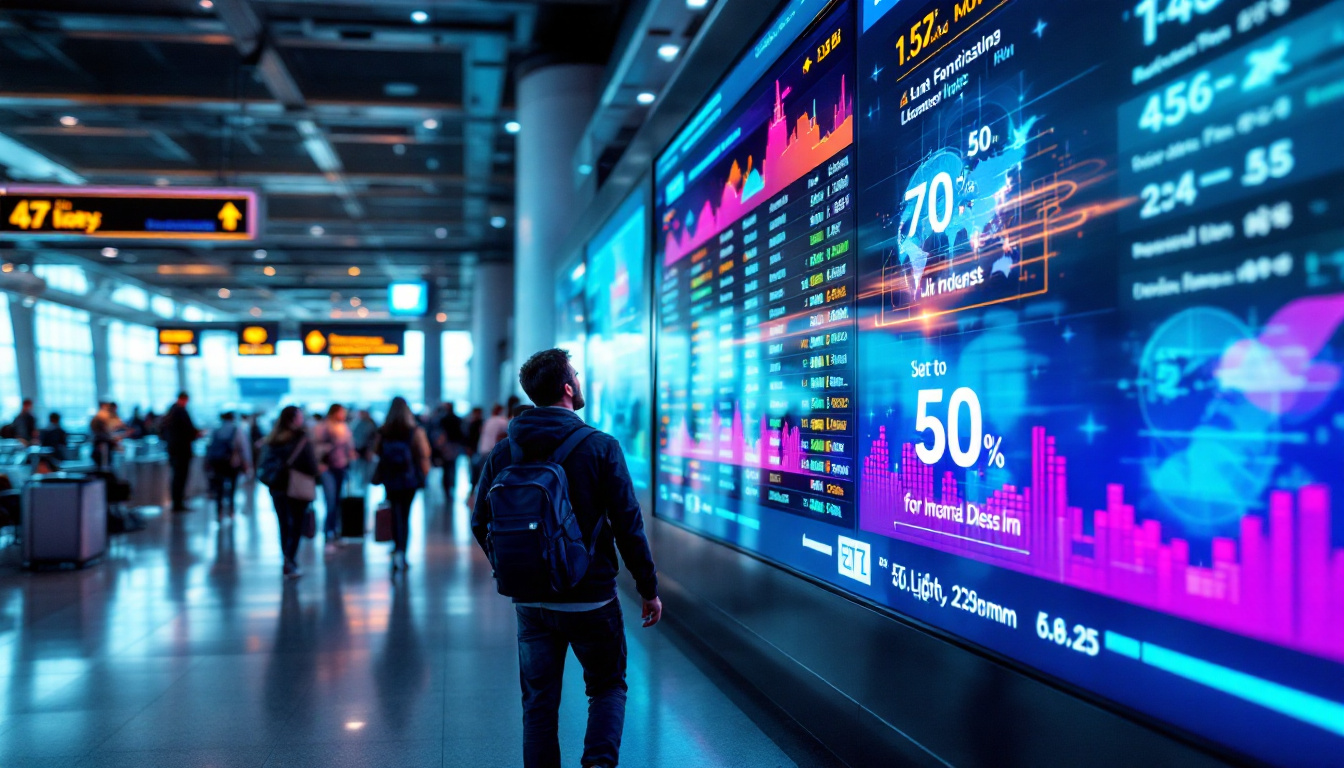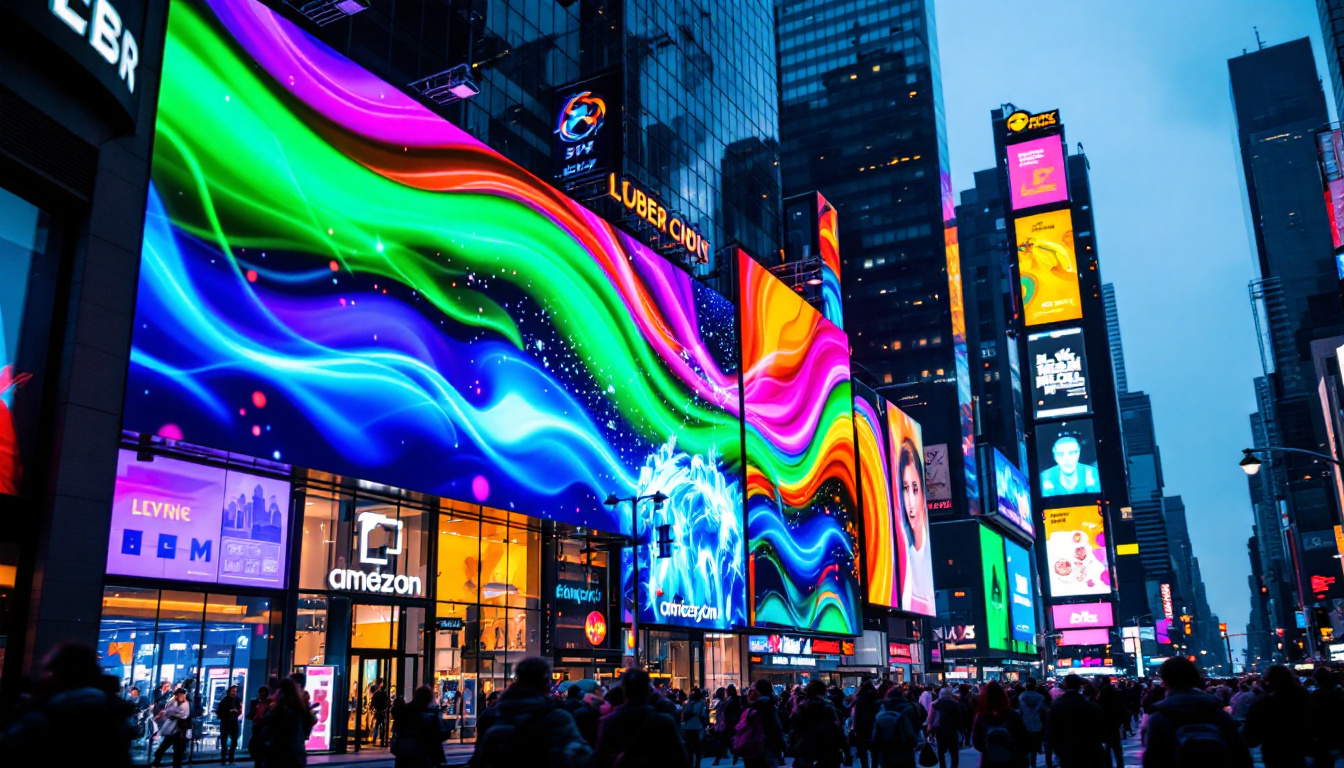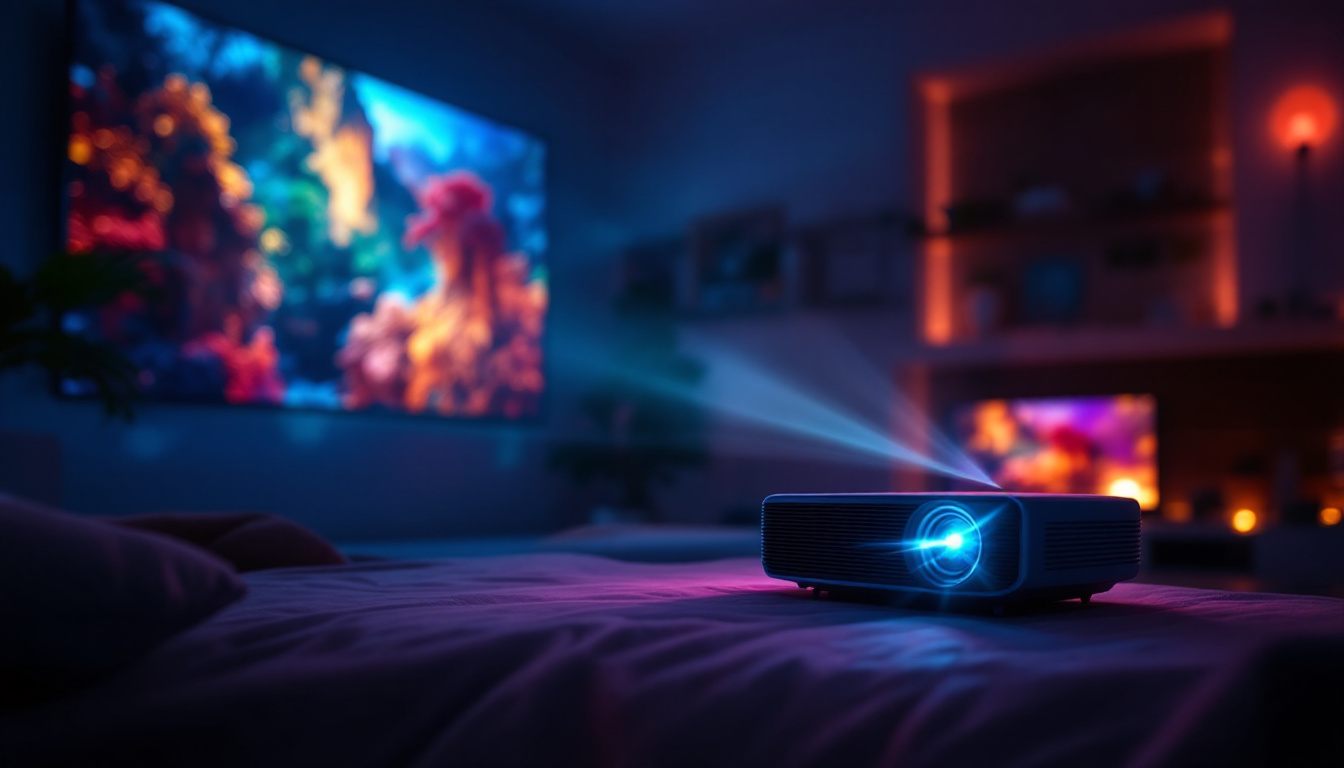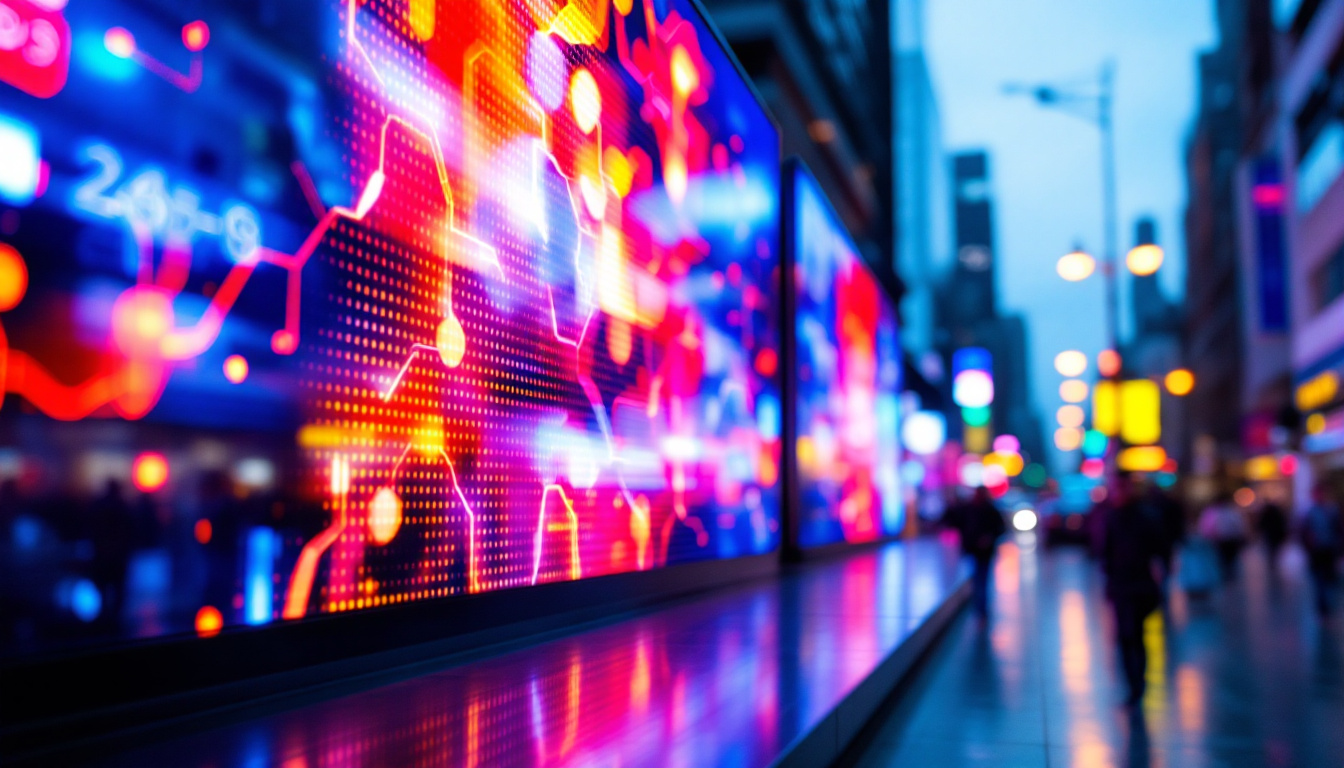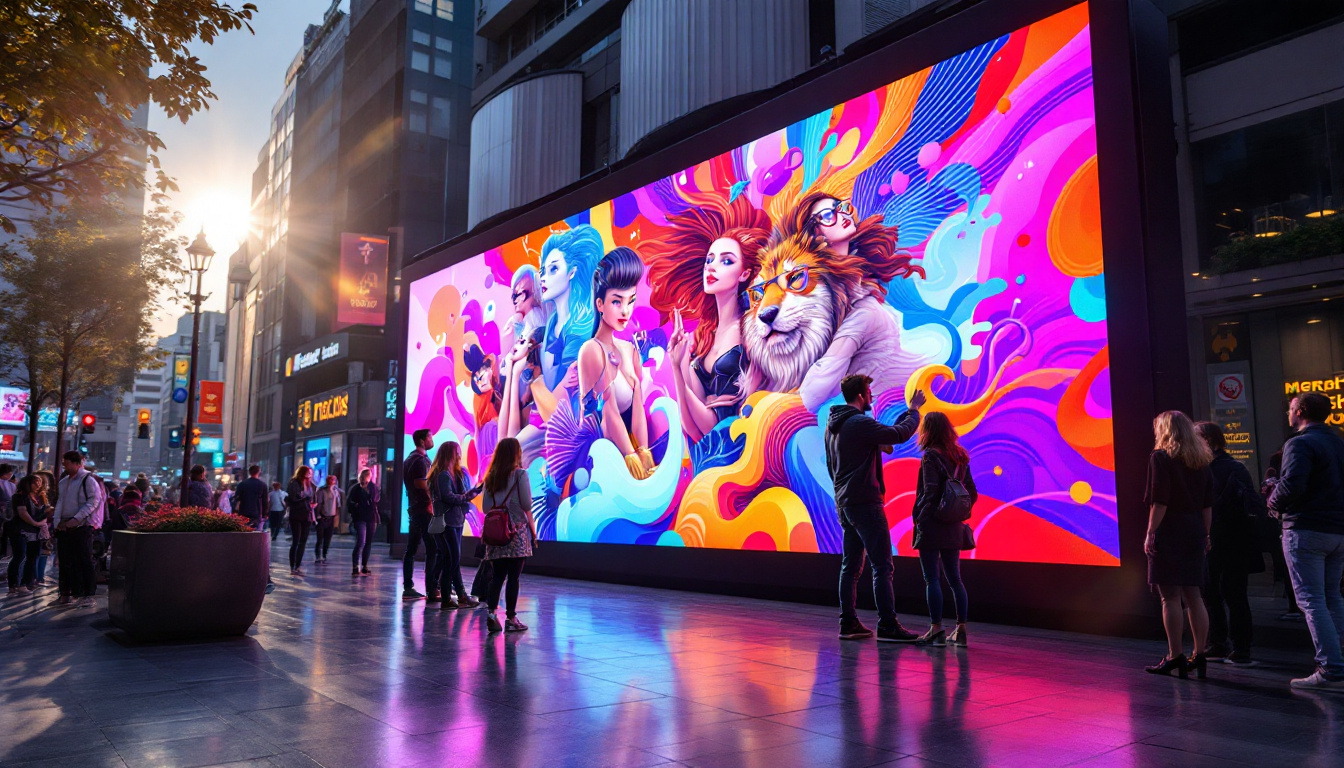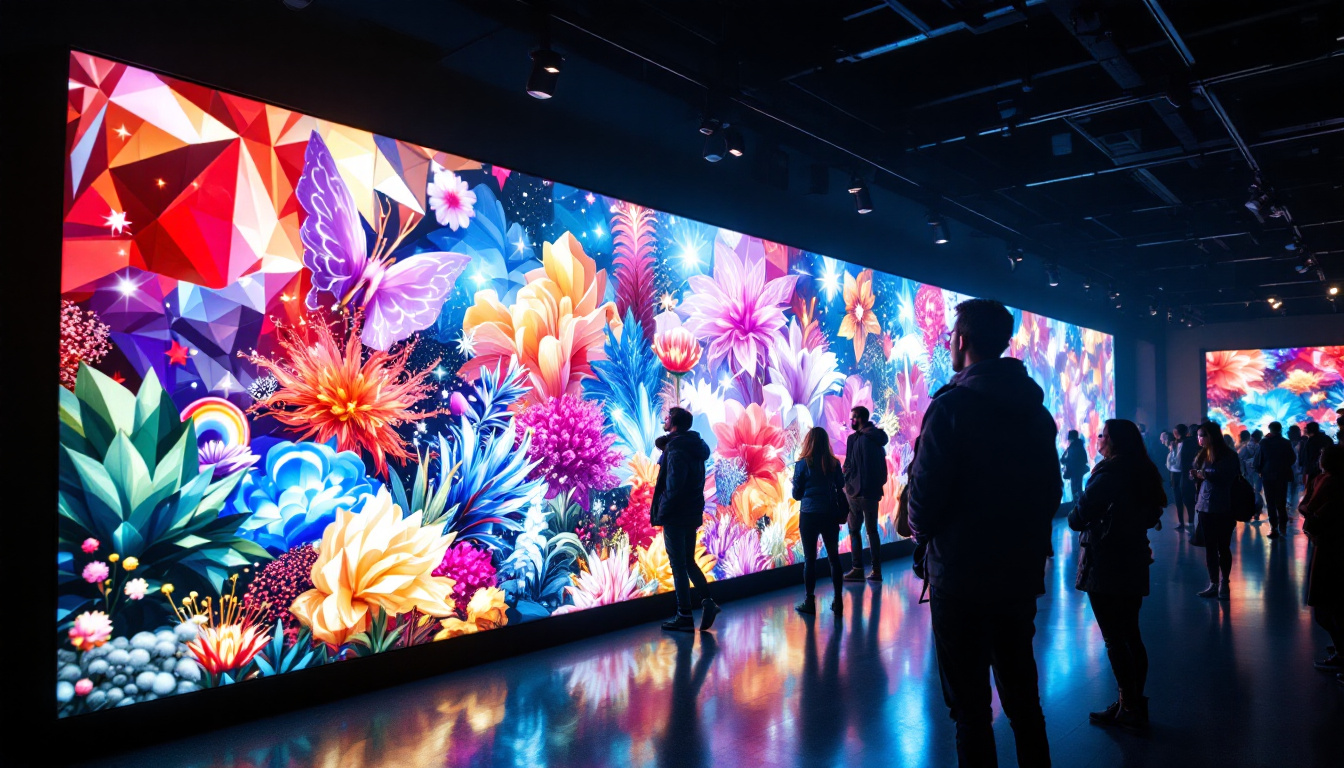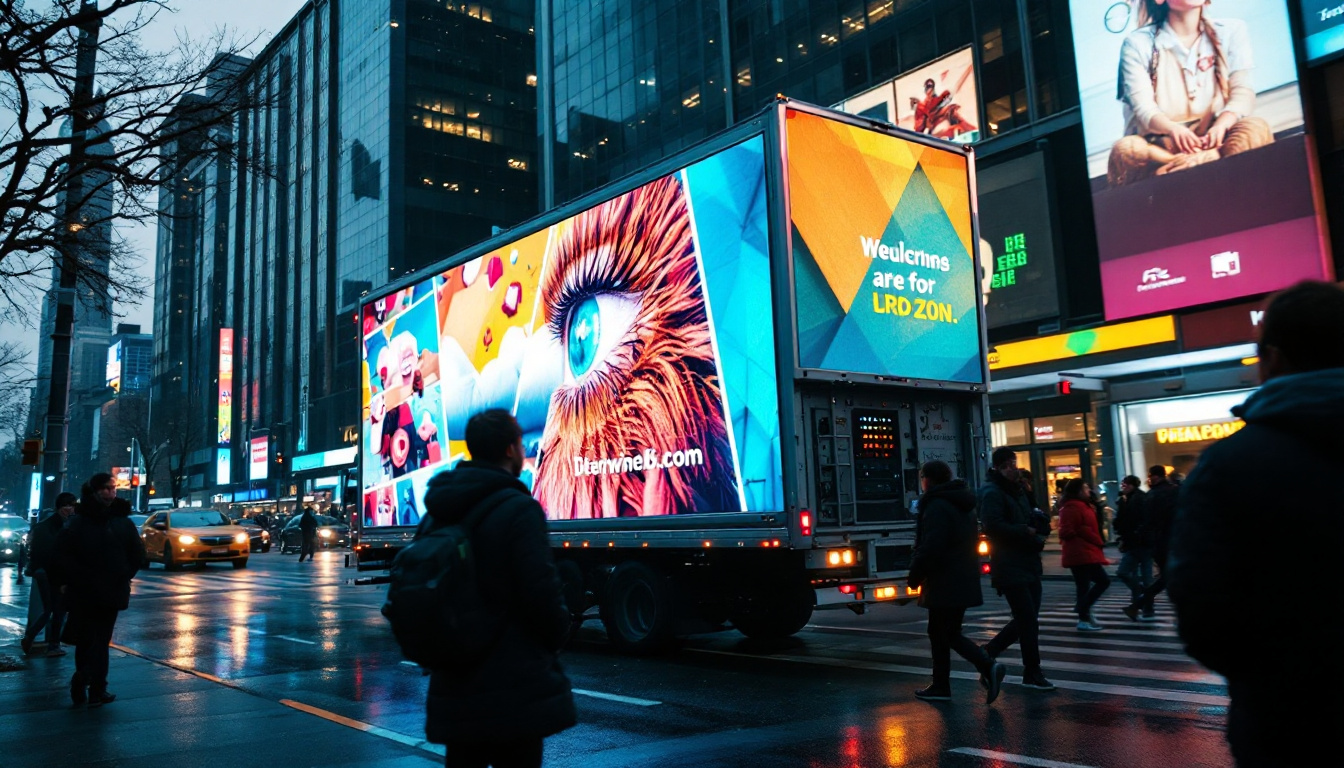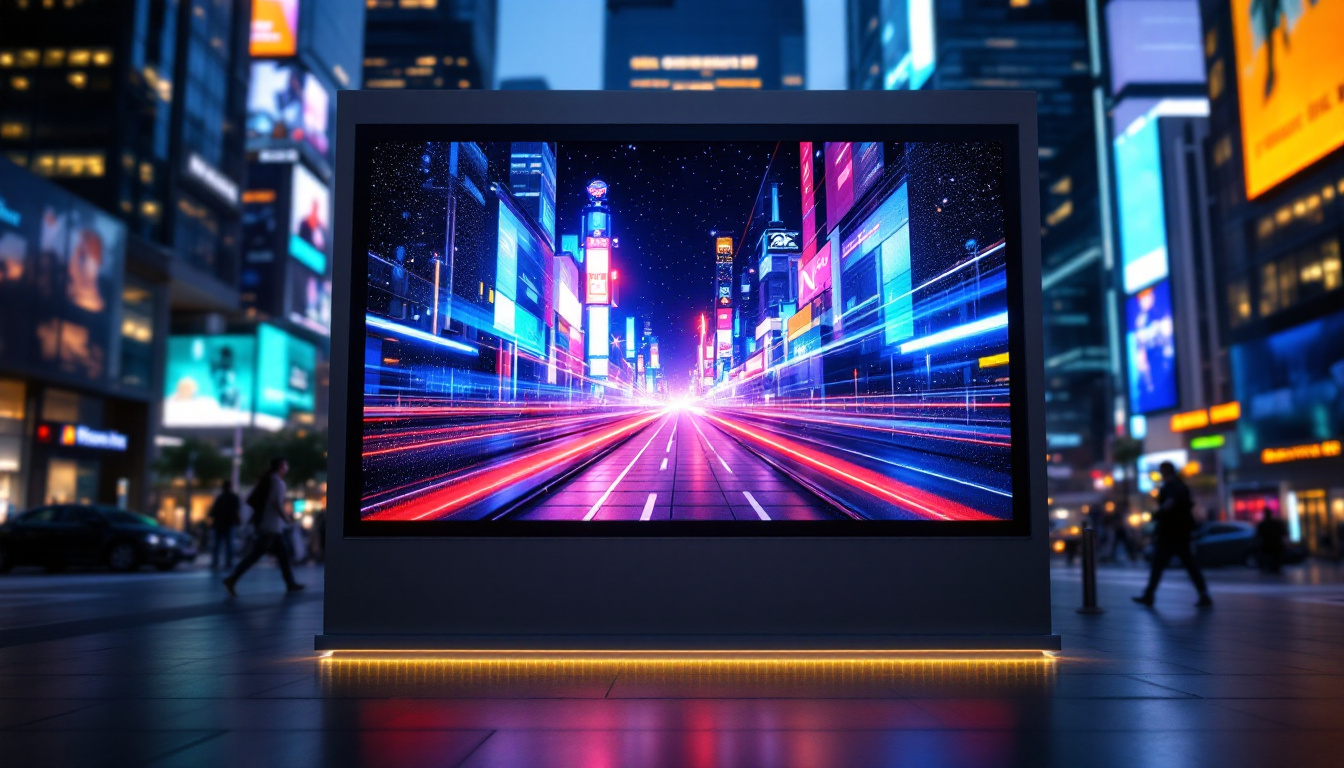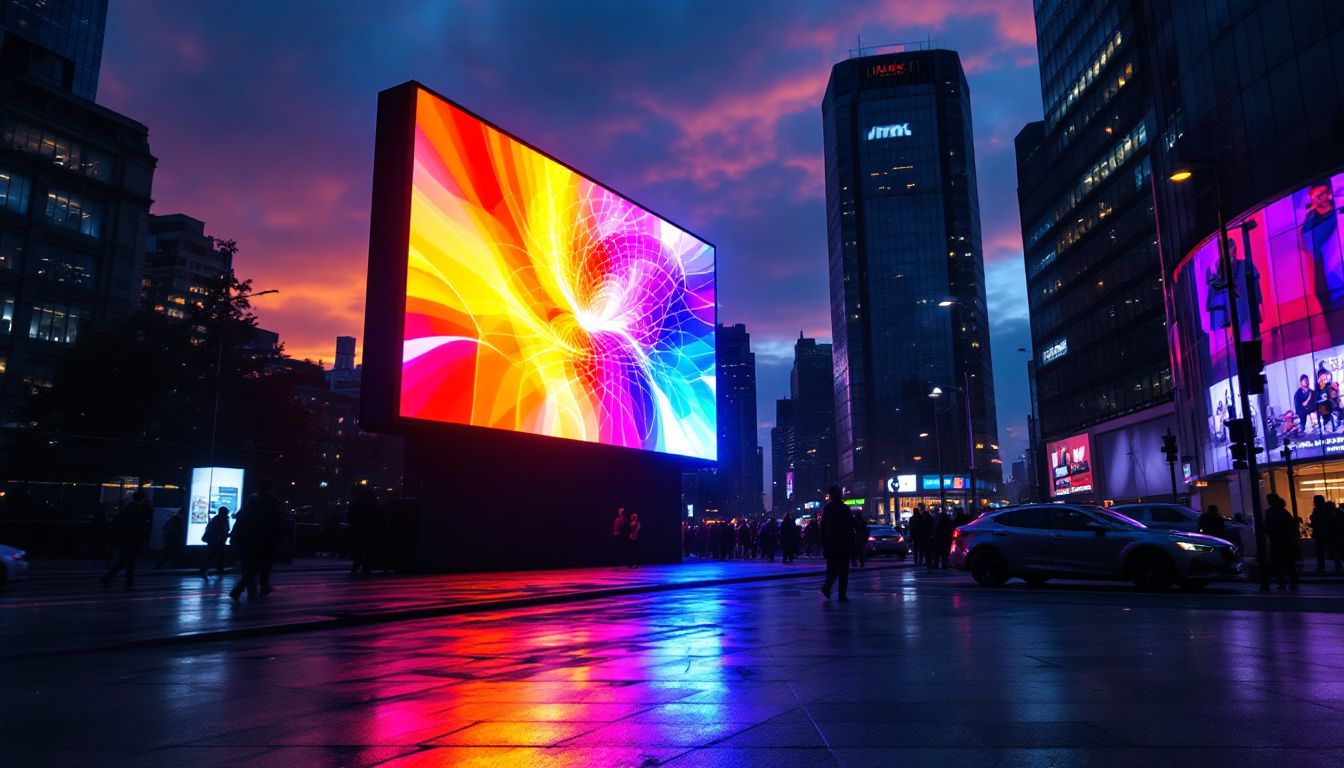In recent years, LED display technology has transformed the way information is presented in various environments, from retail spaces to corporate offices. Among the most innovative applications of this technology is the portrait wall, a visually striking installation that captures attention and conveys messages effectively. This article delves into the concept of portrait walls, exploring their design, functionality, and the advantages they offer over traditional display methods.
Understanding Portrait Walls
A portrait wall is a vertical arrangement of LED screens that can be used for a variety of purposes, including advertising, information dissemination, and artistic displays. Unlike traditional horizontal displays, portrait walls are designed to stand tall, making them ideal for environments where vertical space is more abundant than horizontal space. Their striking visual presence can capture the attention of passersby, making them an effective tool for engagement in high-traffic areas.
Design Considerations
The design of a portrait wall involves careful planning and consideration of several factors. The size and resolution of the LED panels play a crucial role in determining the overall visual impact. High-resolution displays ensure that images and videos are crisp and clear, enhancing the viewer’s experience. Additionally, the choice of color and brightness settings can significantly influence how the content is perceived, with vibrant colors drawing in viewers and creating a more immersive experience.
Moreover, the arrangement of the panels can vary based on the intended use. For example, a retail store may opt for a seamless installation that creates a unified visual experience, while a corporate office might choose a modular design that allows for flexibility in content presentation. The integration of interactive elements, such as touchscreens or motion sensors, can further enhance engagement, allowing viewers to interact with the content displayed on the portrait wall. This interactivity can transform a passive viewing experience into an engaging one, encouraging customers to explore products or services in a dynamic way.
Installation and Configuration
Installing a portrait wall requires expertise in both hardware and software. The LED panels must be mounted securely, often on a wall or a dedicated frame, and connected to a content management system that allows for easy updates and changes. This system is crucial for controlling what is displayed, ensuring that content can be tailored to specific audiences or events. Furthermore, the installation process may involve collaboration with architects and interior designers to ensure that the portrait wall complements the overall aesthetic of the space.
Configuration also includes calibrating the brightness and color settings to ensure that the display is visible in various lighting conditions. This is particularly important in environments such as shopping malls or airports, where ambient light levels can fluctuate significantly. Advanced calibration techniques may involve using specialized software and tools to adjust the display settings for optimal performance, ensuring that the portrait wall remains effective regardless of the time of day or the amount of natural light in the area. Additionally, regular maintenance checks are essential to keep the system running smoothly and to address any technical issues that may arise, thereby prolonging the lifespan of the installation and ensuring consistent quality in content delivery.
Benefits of Portrait Walls
Portrait walls offer several advantages over traditional display methods, making them an attractive option for businesses and organizations looking to enhance their visual communication strategies.
Enhanced Visibility
The vertical orientation of portrait walls allows for greater visibility, especially in crowded spaces. They naturally draw the eye upward, making it easier for passersby to notice the displayed content. This is particularly beneficial in retail environments where capturing customer attention is crucial for driving sales.
Furthermore, the brightness and vibrancy of LED displays ensure that content remains visible even in well-lit areas, reducing the likelihood of viewers missing important messages.
Dynamic Content Presentation
One of the standout features of LED portrait walls is their ability to present dynamic content. Unlike static posters or traditional billboards, LED displays can showcase videos, animations, and real-time information. This capability allows businesses to engage their audience more effectively, providing a richer experience that can be tailored to specific events or promotions.
For instance, a museum could use a portrait wall to display rotating exhibits, while a corporate office might showcase live updates from social media or news feeds. The possibilities are virtually limitless, allowing for creativity and innovation in content presentation.
Applications of Portrait Walls
Portrait walls can be found in a wide range of settings, each leveraging the technology to meet specific needs. Understanding these applications can provide insight into the versatility of LED displays.
Retail Environments
In retail, portrait walls serve as powerful marketing tools. They can be used to display promotional content, highlight new products, or even showcase customer testimonials. The ability to change content quickly allows retailers to respond to trends and customer preferences in real-time.
Moreover, portrait walls can be integrated into the overall store design, enhancing the aesthetic appeal while providing functional benefits. For example, a fashion retailer might use a portrait wall to display runway shows or styling tips, creating an immersive shopping experience.
Corporate Settings
In corporate environments, portrait walls are often used for internal communication and branding. They can display company announcements, performance metrics, or even employee recognition programs. This not only keeps employees informed but also fosters a sense of community and engagement within the organization.
Additionally, during presentations or meetings, portrait walls can serve as dynamic visual aids, enhancing the effectiveness of the communication. The ability to display high-quality visuals can help convey complex information more clearly, making it easier for audiences to grasp key points.
Public Spaces
In public spaces such as airports, train stations, and stadiums, portrait walls play a vital role in information dissemination. They can display flight information, event schedules, or safety messages, ensuring that the public remains informed and engaged.
Moreover, these installations can also serve as platforms for advertising, allowing brands to reach a captive audience in high-traffic areas. The combination of visibility and dynamic content makes portrait walls an effective medium for both communication and marketing.
Technical Aspects of LED Portrait Walls
Understanding the technical components of LED portrait walls is essential for those looking to implement this technology. From the types of LED panels to the software used for content management, several factors contribute to the effectiveness of these displays.
Types of LED Panels
LED panels come in various types, each with its own advantages and disadvantages. Common types include SMD (Surface Mount Device) and DIP (Dual In-line Package) panels. SMD panels are known for their high resolution and wide viewing angles, making them ideal for portrait walls where image quality is paramount.
On the other hand, DIP panels are typically used for outdoor displays due to their durability and brightness. However, they may not provide the same level of detail as SMD panels, making them less suitable for indoor applications where close viewing is common.
Content Management Systems
A robust content management system (CMS) is crucial for the effective operation of a portrait wall. The CMS allows users to upload, schedule, and manage content seamlessly. It should support various media formats, including images, videos, and live feeds, to ensure versatility in content presentation.
Additionally, many modern CMS platforms offer remote access, enabling users to update content from anywhere. This feature is particularly beneficial for businesses with multiple locations, allowing for consistent messaging across all portrait walls.
Challenges and Considerations
While portrait walls offer numerous benefits, there are also challenges and considerations that must be addressed to ensure successful implementation. Understanding these challenges can help organizations make informed decisions.
Cost Implications
The initial investment required for a portrait wall can be significant. Costs include not only the LED panels but also the installation, content management systems, and ongoing maintenance. Organizations must weigh these costs against the potential benefits to determine if a portrait wall is a viable option for their needs.
Moreover, ongoing operational costs, such as electricity and content updates, should also be factored into the budget. However, many businesses find that the return on investment justifies the initial expenditure, particularly when considering the enhanced visibility and engagement that portrait walls provide.
Maintenance and Support
Maintaining a portrait wall requires regular checks and updates to ensure optimal performance. This includes monitoring the LED panels for any signs of wear or malfunction, as well as updating content to keep it fresh and relevant. Organizations should have a plan in place for routine maintenance and support to address any issues that may arise.
Additionally, training staff on how to use the content management system effectively can help maximize the potential of the portrait wall. Ensuring that employees are comfortable with the technology will lead to more effective content presentation and a better overall experience for viewers.
The Future of Portrait Walls
The future of portrait walls looks promising, with advancements in technology paving the way for even more innovative applications. As LED technology continues to evolve, we can expect to see improvements in resolution, energy efficiency, and overall performance.
Integration with Smart Technologies
One of the most exciting trends is the integration of portrait walls with smart technologies. This includes the use of sensors that can detect audience engagement and adjust content accordingly. For instance, a portrait wall could display different messages based on the demographics of the viewers, enhancing the relevance of the content.
Moreover, the rise of artificial intelligence (AI) could further revolutionize how content is managed and presented. AI algorithms could analyze viewer behavior and preferences, allowing for highly personalized content delivery that resonates with specific audiences.
Sustainability Considerations
As businesses increasingly prioritize sustainability, portrait walls will likely evolve to become more energy-efficient and environmentally friendly. Advances in LED technology are already leading to lower energy consumption, and future developments may focus on using sustainable materials and practices in the production and installation of portrait walls.
Conclusion
Portrait walls represent a significant advancement in display technology, offering a dynamic and engaging way to communicate messages in various environments. Their vertical orientation, combined with the ability to present dynamic content, makes them an attractive option for businesses and organizations looking to enhance their visual communication strategies.
While there are challenges to consider, the benefits of portrait walls—such as enhanced visibility, dynamic content presentation, and versatility in application—make them a compelling choice for modern communication needs. As technology continues to evolve, the future of portrait walls looks bright, promising even more innovative solutions for engaging audiences and conveying messages effectively.
Discover the Future of Visual Engagement with LumenMatrix
Ready to elevate your space with the dynamic and engaging power of portrait walls? LumenMatrix is at the forefront of LED display innovation, offering a wide array of solutions tailored to create unforgettable visual experiences. From Indoor and Outdoor LED Wall Displays to specialized options like Vehicle, Sports, and Floor LED Displays, our mission is to transform your visual communication strategy. Don’t miss the opportunity to captivate your audience with unparalleled clarity and impact. Check out LumenMatrix LED Display Solutions today and step into the future of digital signage.

